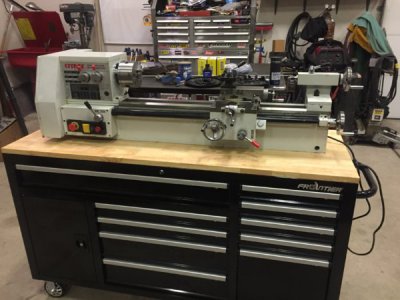First off I'd like to say hello to all. I have zero experience operating a metal lathe and a mill. I play around with cars in my shop and always need something machined in one fashion or another. I have a friend I kinda rely on that helps with some things for me but like everyone else I get tired of asking him to do things for me.
So after watching Craigslist for a while and opting out of buying anything from HF I found these two machines.
OTMT OT252700
27.5" belt lathe
Enco 20" mill/drill
These machines are supposedly brand new.
I started cleaning the lathe up first. It appears to be in nice condition. It was still covered in cosmoline I guess. I can post a picture of my lathe and then maybe start asking questions I have about operating it with success. If anyone has experience with one of these elcheapo lathes like mine and have corrected any issues the lathe comes with please feel free to share with me.

So after watching Craigslist for a while and opting out of buying anything from HF I found these two machines.
OTMT OT252700
27.5" belt lathe
Enco 20" mill/drill
These machines are supposedly brand new.
I started cleaning the lathe up first. It appears to be in nice condition. It was still covered in cosmoline I guess. I can post a picture of my lathe and then maybe start asking questions I have about operating it with success. If anyone has experience with one of these elcheapo lathes like mine and have corrected any issues the lathe comes with please feel free to share with me.

